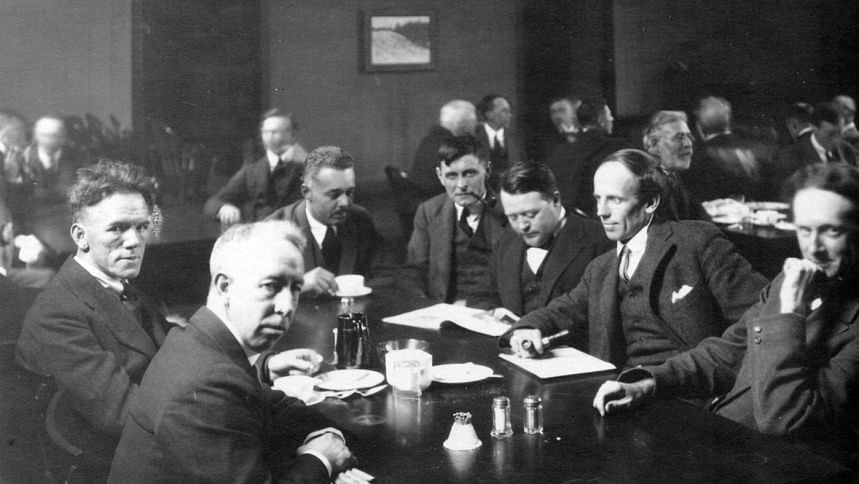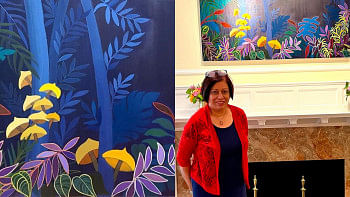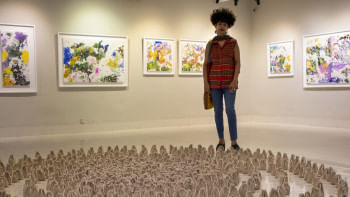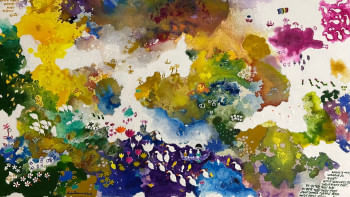Canada's Group of Seven: A legacy of art

Painting encompasses both imaginative creations and practical applications, whether as protective coatings and decorative elements. Within the realm of visual art, paintings serve as a medium to capture the essence of ideas and emotions on a two-dimensional canvas.
Today, we embark on an exploration of a group of Canadian artists who left a lasting mark on the country's artistic landscape. This collective, known as the Group of Seven, emerged in 1919 when they came together to organise an exhibition and adopted this evocative title to signify their shared purpose. Join us as we explore into their remarkable legacy, delving into the founders, their artistic vision, and the enduring impact they had.
The founding members of this artistic collective consisted of Franklin Carmichael, Lawren Harris, A Y Jackson, Franz Johnston, Arthur Lismer, J E H MacDonald, and F H Varley. Driven by a profound love for the Canadian landscape, these artists sought to forge a unique national artistic identity through their creative endeavours.
As time went on, the group expanded its membership, welcoming new talents such as A J Casson in 1926, Edwin Holgate in 1930, and Lionel LeMoine FitzGerald in 1932.
Additionally, the esteemed artists Tom Thomson and Emily Carr, though not official members, played instrumental roles in shaping the group's aesthetic direction. Thomson's artistic contributions, including iconic pieces like "The West Wind" and "The Jack Pine," exerted a profound influence on the group's creative trajectory.
Central to the Group of Seven's philosophy was the belief that a distinctive Canadian art could be nurtured through direct engagement with nature. Their most renowned body of work consisted of paintings that drew inspiration from the mesmerising Canadian landscape, giving rise to the first significant national art movement in Canada.
Following the group's dissolution in 1933, the Canadian Group of Painters took its place, incorporating members from the Beaver Hall Group, who had a history of exhibiting alongside the Group of Seven both domestically and internationally.
The canvases of the Group of Seven showcased a vivid tapestry of Canadian landscapes, with a particular focus on the breath-taking regions of Algonquin, Georgian Bay, and Algoma of Ontario province.
However, their artistic explorations took them far and wide, as they ventured into the Arctic, the Rockies, the East Coast, and Quebec, immortalizing the beauty they encountered through their brushstrokes. Their exhibitions, including the inaugural showcase at the Art Gallery of Toronto in May 1920, served as platforms to share their artistic expressions with captivated audiences.
Over the years, the artistry of the Group of Seven has gained widespread recognition and appreciation. Esteemed galleries and museums, such as the Crocker Art Museum, located in Sacramento, California, have proudly exhibited their remarkable works, allowing art enthusiasts to immerse themselves in their captivating creations. The demand for the Group's artworks at auctions has been notable, with prices varying based on factors such as size and medium.
Notably, Lawren Harris's masterpiece, "Mountain Forms", achieved a record-breaking sale price of USD 11.21 million, solidifying its position as the most expensive artwork ever sold at a Canadian auction.
The Group of Seven, Canada's first internationally recognised art movement, stood united in their belief that a distinctive Canadian art could emerge through direct engagement with the country's vast and extraordinary landscapes.
While their painting style showcased influences from impressionism, post-impressionism, naturalism, and art nouveau, the Group of Seven remained loosely connected stylistically. Rather, their bond lay in their shared commitment to exploring the rugged Canadian wilderness and establishing a credible national artistic legacy.

 For all latest news, follow The Daily Star's Google News channel.
For all latest news, follow The Daily Star's Google News channel. 







Comments